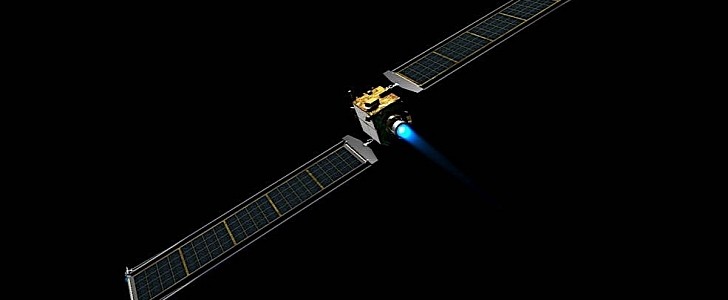It’s been a long time in the making, but finally, humanity’s first major attempt at altering the course of an asteroid is on its way to the target.
On Wednesday, a SpaceX Falcon 9 rocket took off from Vandenberg Space Force Base in California carrying with it a spacecraft called Double Asteroid Redirection Test. DART for short, the spacecraft will now start its journey towards a binary asteroid called Didymos.
Unlike most other missions we humans have sent into space, this one is not meant to study the piece of floating rock, but smash into it and see if it can alter its course. Sometime in the fall of next year, probably in October, DART will impact the smaller sibling of the Didymos pair at speeds of 15,000 mph (24,140 kph).
The spacecraft carries no nuclear warheads, no drills, and no lasers, and will rely exclusively on kinetic energy to change the asteroid’s speed and orbit around the main body by a fraction of one percent. That might seem like a tiny amount, but you have to consider the spaceship is rather small (12.5 meters × 2.4 meters/41.0 feet × 7.9 feet) compared to the rock it will hit (160 meters/525 feet across).
That fraction of a percent will be enough though to change the smaller body’s orbit around the larger one by several minutes – enough to be seen from Earth using telescopes, and enough to prove the point that if push comes to shove, we could technically be able to put up a fight, and defend ourselves against killer rocks from space.
The idea of having a redirection test conducted out there came to be a long time ago, and NASA has been working on DART since 2018. The necessity of such knowledge became even clearer though earlier this year, at the end of a tabletop exercise.
Back in May, a bunch of scientists found that humanity isn’t prepared to fend off falling asteroids with the current level of technology and weaponry, not even if we had six months of advance warning.
The projected success of DART will of course not change that, but it will open the doors to the future hardware and procedures that just might give us a fighting chance.
You can watch the full DART launch in the video attached below.
Unlike most other missions we humans have sent into space, this one is not meant to study the piece of floating rock, but smash into it and see if it can alter its course. Sometime in the fall of next year, probably in October, DART will impact the smaller sibling of the Didymos pair at speeds of 15,000 mph (24,140 kph).
The spacecraft carries no nuclear warheads, no drills, and no lasers, and will rely exclusively on kinetic energy to change the asteroid’s speed and orbit around the main body by a fraction of one percent. That might seem like a tiny amount, but you have to consider the spaceship is rather small (12.5 meters × 2.4 meters/41.0 feet × 7.9 feet) compared to the rock it will hit (160 meters/525 feet across).
That fraction of a percent will be enough though to change the smaller body’s orbit around the larger one by several minutes – enough to be seen from Earth using telescopes, and enough to prove the point that if push comes to shove, we could technically be able to put up a fight, and defend ourselves against killer rocks from space.
The idea of having a redirection test conducted out there came to be a long time ago, and NASA has been working on DART since 2018. The necessity of such knowledge became even clearer though earlier this year, at the end of a tabletop exercise.
Back in May, a bunch of scientists found that humanity isn’t prepared to fend off falling asteroids with the current level of technology and weaponry, not even if we had six months of advance warning.
The projected success of DART will of course not change that, but it will open the doors to the future hardware and procedures that just might give us a fighting chance.
You can watch the full DART launch in the video attached below.







